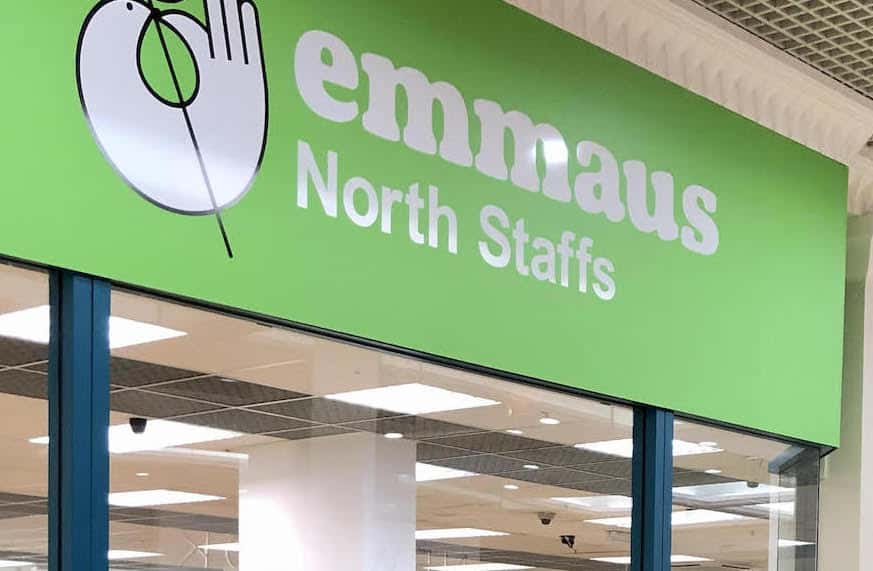Staffordshire Hoard exhibition revamped in the Potteries
The Potteries Museum and Art Gallery has launched a revamped Staffordshire Hoard exhibition as part of ten year celebrations.
Ten years ago on 5 July 2009, the Staffordshire Hoard was discovered in a farmer’s field near Lichfield. Still the largest collection of Anglo-Saxon gold and silver ever discovered, the Staffordshire Hoard has been seen by more than four million people at the Potteries Museum & Art Gallery (PMAG) and Birmingham Museum & Art Gallery (BMAG) since it was discovered, and by many more at travelling exhibitions as far reaching as Washington DC.
To celebrate the 10-year anniversary the Potteries Museum & Art Gallery has launched a revamped Staffordshire Hoard exhibition, with several star objects returning to the gallery for the first time in years.The returning treasure includes a stunning original cheek piece from the famous Staffordshire Hoard Helmet – the grandest helmet ever known from the period. An iconic pectoral cross, a stunning pommel cap, and other pieces of the helmet will also be back in the exhibition.
The museum will also celebrate the anniversary by holding a Staffordshire Hoard Garnets and Gold Festival throughout July, with several exciting events including re-enactments, demonstrations, birds of prey presentations and talks.
When the Staffordshire Hoard was first discovered, queues formed outside PMAG and BMAG as thousands of people gathered to get a glimpse of the tiny scale and exquisite craftsmanship of the pieces. The display at PMAG quickly became the most successful exhibition ever held at the museum, with around 55,000 people visiting in the first three weeks of public display. Similar visitor numbers were recorded at BMAG. Ten years on, the Anglo-Saxon find continues to bring crowds to the two museums which care for the Hoard on behalf of joint owners Stoke-on-Trent City Council and Birmingham City Council.
In November 2018 the museums revealed two replicas of the Staffordshire Hoard Helmet – a high-status helmet which approximately a third of the fragments in the Staffordshire Hoard come from. The replicas of the magnificent helmet brought renewed interest to the Hoard, proving to be a hit with schoolchildren, tourists and residents in Stoke-on-Trent and Birmingham alike. The fragments and artefacts within the Staffordshire Hoard were crafted between the mid-sixth and mid-seventh centuries AD. They combine to a total of 5.094 kilos of gold, 1.442 kilos of silver and 3,500 cloisonné garnets. Although fragmented and damaged when found, there is nothing comparable in terms of content and quantity in the UK or mainland Europe.

Staffordshire Hoard Helmet reconstruction. Pic Copyright Birmingham Museums Trust
While one of the great mysteries of the Hoard is who buried it in a Staffordshire field, experts believe that the precious materials and exquisite craftsmanship of the artefacts mean that it would have belonged to high status individuals and elite armies fighting for ancient Anglo-Saxon kingdoms.
Significant items include a selection of Christian objects – the great cross, the pectoral cross, the inscription – which are some of the earliest Anglo-Saxon church objects ever discovered. A replica of the great cross, which was made in the Jewellery Quarter, in Birmingham was presented to the Pope as a gift from the people of Birmingham, before he carried out mass in Cofton Park in 2010 as part of his state visit. In the same year, the Prince of Wales became the first Royal to handle the treasure in 1,400 years during a visit to PMAG.
Councillor Lorraine Beardmore, Stoke-on-Trent City Council cabinet member for sport, culture and leisure, said: “This stunning treasure continues to change our perceptions and improve our understanding of ancient Britain. In just 10 years, the efforts of a dedicated team of archaeologists, curators and Anglo-Saxon experts have made huge strides to catalogue, preserve and research these wonderful, delicate ancient artefacts.
“This work has been taking place at the same time as exhibitions of the treasure have been packing museums throughout the region – over what was once the kingdom of Mercia – as well as at the British Museum and other museums across the country and internationally.
“A big part of our work has been to ensure that these unparalleled items remain on permanent public display and are as accessible as possible. A huge public fundraising effort contributed to saving this treasure for the nation, and PMAG and BMAG have worked hard to ensure museum visitors are able to see the treasure. Both museums have completely revamped gallery spaces to accommodate permanent displays of the Hoard, with dedicated exhibitions, and at PMAG, a refreshed gallery is opening to mark the tenth anniversary.”
Toby Watley, Director of Collections at Birmingham Museums Trust, said: “Ten years on since its discovery, the Staffordshire Hoard remains one of our most popular galleries and continues to fascinate and inspire visitors here at Birmingham Museum & Art Gallery, at the Potteries Museum & Art Gallery, and on tours. The public’s interest goes beyond the museum displays; the Staffordshire Hoard has become part the region’s shared history.”
Duncan Wilson, Chief Executive of Historic England, said: “This Hoard was an astonishing discovery in 2009 and over the past 10 years the research we helped to fund has allowed us to learn just what our ancestors were capable of.”
The collection was acquired with donations from members of the public following a campaign led by the Art Fund, the national fundraising charity for art. The acquisition was also generously supported by the National Heritage Memorial Fund, Birmingham City Council, Stoke-on-Trent City Council, Wartski, and many other trusts and foundations, and corporate philanthropy.
The Staffordshire Hoard is on permanent display at Birmingham Museum & Art Gallery and the Potteries Museum & Art Gallery, Stoke-on-Trent.
For more information go to staffordshirehoard.org.uk.











